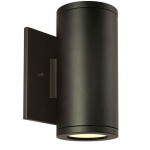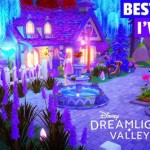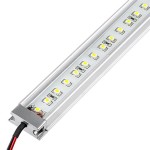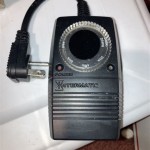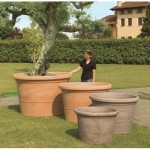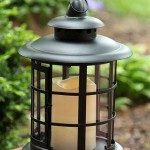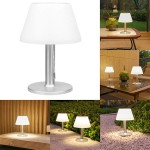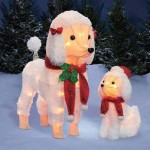LED Lighting Solutions for Outdoor Environments
Outdoor lighting plays a crucial role in enhancing safety, security, and aesthetics for residential, commercial, and public spaces. Light Emitting Diode (LED) technology has revolutionized outdoor illumination, offering significant advantages over traditional lighting options like incandescent, halogen, and high-intensity discharge (HID) lamps. This article explores the benefits, applications, and considerations involved in implementing LED lighting for outdoor use.
Energy Efficiency and Cost Savings
One of the primary reasons for choosing LED lighting for outdoor applications is its exceptional energy efficiency. LEDs consume significantly less power than traditional light sources to produce the same amount of light output, measured in lumens. This lower energy consumption translates directly into reduced electricity bills, making LEDs a cost-effective long-term investment. The efficiency of an LED is often measured in lumens per watt (lm/W), indicating the amount of light produced for each watt of electricity consumed. High-quality outdoor LEDs can achieve efficiencies exceeding 100 lm/W, compared to incandescent bulbs that typically offer around 10-20 lm/W.
The lifespan of LEDs further contributes to cost savings. While incandescent bulbs might last for approximately 1,000 hours, and halogen bulbs around 2,000 hours, LEDs can operate for 25,000 to 50,000 hours or even longer, depending on the quality of the product and the operating conditions. This extended lifespan significantly reduces the frequency of bulb replacements, lowering maintenance costs, particularly in areas that are difficult or expensive to access, such as high-mounted streetlights or landscape lighting fixtures. Over time, the reduced energy consumption and maintenance requirements result in substantial savings that offset the initial higher purchase price of LED fixtures.
Moreover, many utility companies offer rebates and incentives for businesses and homeowners who switch to energy-efficient LED lighting. These programs further reduce the upfront cost of LED installations and accelerate the return on investment. By reducing energy consumption, LEDs also contribute to a smaller carbon footprint, aligning with sustainability initiatives and promoting environmentally responsible practices.
Durability and Performance in Outdoor Conditions
Outdoor environments present unique challenges for lighting systems, including exposure to moisture, extreme temperatures, dust, and physical impact. LEDs are inherently more robust and durable than traditional lighting technologies, making them well-suited for these demanding conditions. Unlike incandescent bulbs that rely on a fragile filament, LEDs are solid-state devices, meaning they have no breakable parts. This construction makes them resistant to shock, vibration, and impact, reducing the risk of damage from vandalism or accidental contact.
Furthermore, outdoor LED fixtures are designed with specific ingress protection (IP) ratings to ensure their resistance to water and dust. IP ratings consist of two digits: the first indicating the level of protection against solid objects (dust), and the second indicating the level of protection against liquids (water). For outdoor applications, a minimum IP rating of IP65 is generally recommended, indicating that the fixture is protected against dust and water projected from a nozzle. Higher IP ratings, such as IP67 or IP68, offer even greater protection for submerged or extremely wet environments.
LEDs are also capable of operating efficiently across a wide range of temperatures, from extreme cold to intense heat. This makes them suitable for use in diverse climates. Outdoor LED fixtures often incorporate heat sinks, which dissipate heat generated by the LED chips and prevent overheating, ensuring optimal performance and longevity. The thermal management of LEDs is crucial for maintaining their light output and color consistency over time.
LEDs provide instant-on functionality, meaning they reach full brightness immediately when switched on, without any warm-up period. This is particularly advantageous in security lighting applications, where immediate illumination is essential. Unlike some traditional light sources that may flicker or dim in cold weather, LEDs maintain their brightness and performance even in freezing temperatures. The ability to operate reliably in harsh outdoor conditions makes LEDs a dependable and long-lasting lighting solution.
Versatility and Control Capabilities
LED technology offers a high degree of versatility in terms of design, color, and control capabilities, making it adaptable to a wide range of outdoor lighting needs. LEDs are available in various shapes, sizes, and color temperatures, allowing for customized lighting solutions that meet specific aesthetic and functional requirements. For example, warm white LEDs (2700-3000K) can create a cozy and inviting atmosphere for residential landscapes, while cool white LEDs (4000-5000K) provide bright and clear illumination for security lighting or commercial areas.
LEDs are dimmable, offering the ability to adjust the light output to suit different times of day or specific needs. Dimming can be achieved through various control methods, such as phase-cut dimming, 0-10V dimming, or digital lighting control systems. Dimming not only provides greater flexibility in creating the desired ambiance but also contributes to energy savings by reducing the power consumption when full brightness is not required.
Color-changing LEDs, also known as RGB (Red, Green, Blue) LEDs, allow for dynamic color lighting effects, which can be used to enhance architectural features, create festive displays, or provide visual cues for events. These LEDs can be controlled using digital lighting control systems, enabling customized color schemes and automated lighting sequences. Color-changing LEDs are commonly used in landscape lighting, building facades, and outdoor entertainment venues.
Smart lighting systems, incorporating LED technology, offer advanced control and automation capabilities. These systems utilize sensors, timers, and wireless communication protocols to optimize lighting performance and efficiency. For example, motion sensors can activate lights only when needed, reducing energy waste and enhancing security. Light sensors can adjust the brightness of the lights based on ambient light levels, ensuring consistent illumination while minimizing energy consumption. Smart lighting systems can be controlled remotely via smartphones or tablets, providing convenient access to lighting settings and monitoring capabilities.
The versatility and control capabilities of LED lighting enable tailored solutions that meet the specific needs of diverse outdoor environments, enhancing safety, security, and aesthetics while maximizing energy efficiency.
Proper selection of LED fixtures is crucial for optimal performance and longevity. Factors to consider include the intended application, the required light output (lumens), the desired color temperature (Kelvin), the IP rating, and the quality of the components. Consulting with a lighting professional can help ensure that the chosen LED fixtures are appropriate for the specific outdoor environment and will provide reliable and efficient illumination for years to come. Regular maintenance, such as cleaning the fixtures to remove dirt and debris, can also help prolong the lifespan and maintain the light output of the LEDs.

Can Led Lights Be Used Outdoors Bpm Electric

Outdoor Led Lighting Exterior Light Fixtures E Conolight

Le 50w Super Bright Outdoor Led Flood Light

Color Changing Waterproof Strip Lights For Outdoor Landscape Lighting

Outdoor G40 String Lights Festive Patio And Garden Lighting Chronos

Waterproof Linear Led Light Bar Fixture 195 Lm Ft 1ft 2ft Super Bright Leds

Ac 110v 220v High Voltage Outdoor Rgb Led Strip 10m 100m

Guide To Exterior Lighting Commercial Led Outdoor

The Complete Guide To Outdoor Led Strip Lights Lighting Access

Avenila Led Outdoor Waterproof Modern Wall Light 2w 4w 6w 8w 12w
Related Posts
